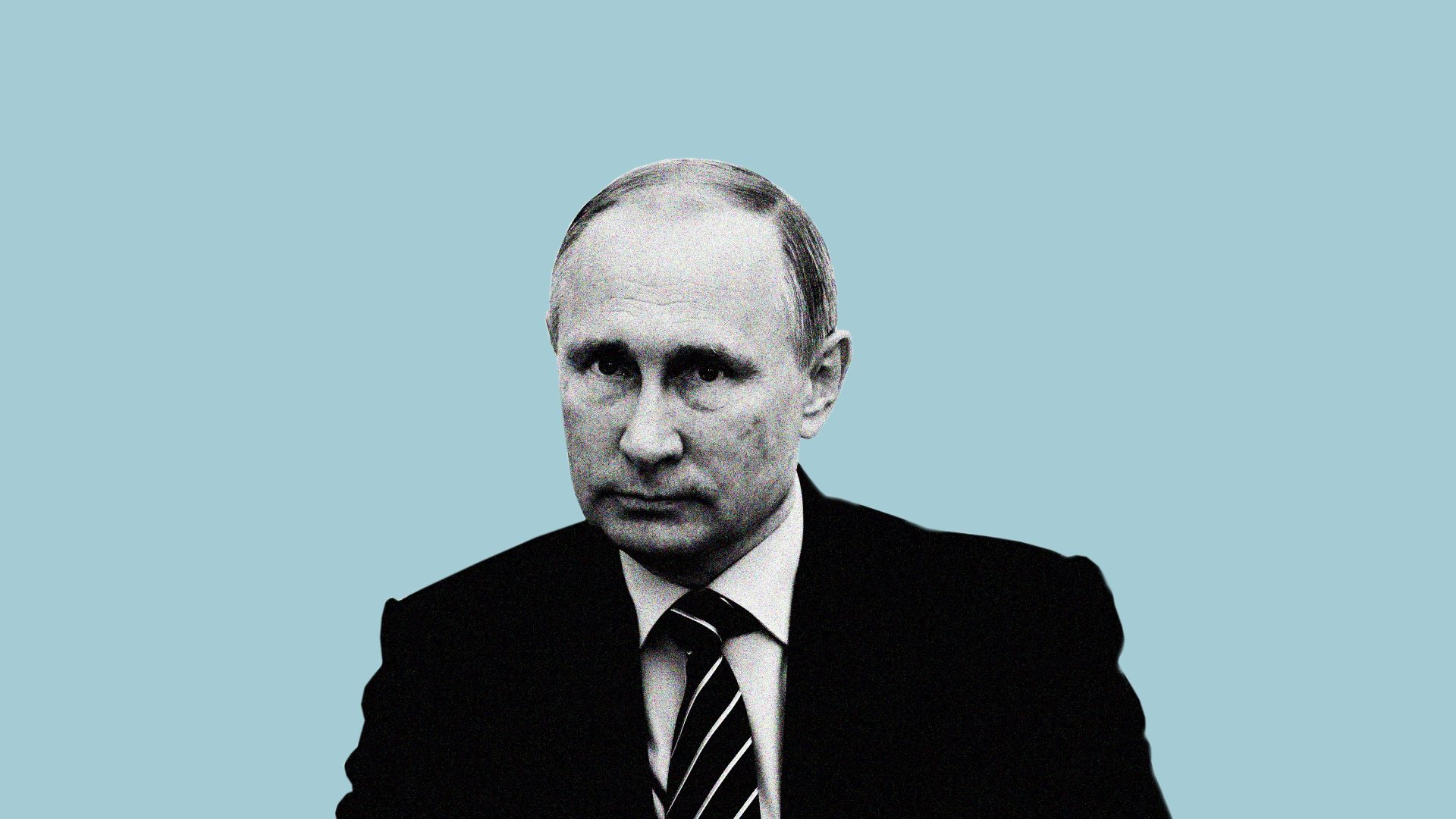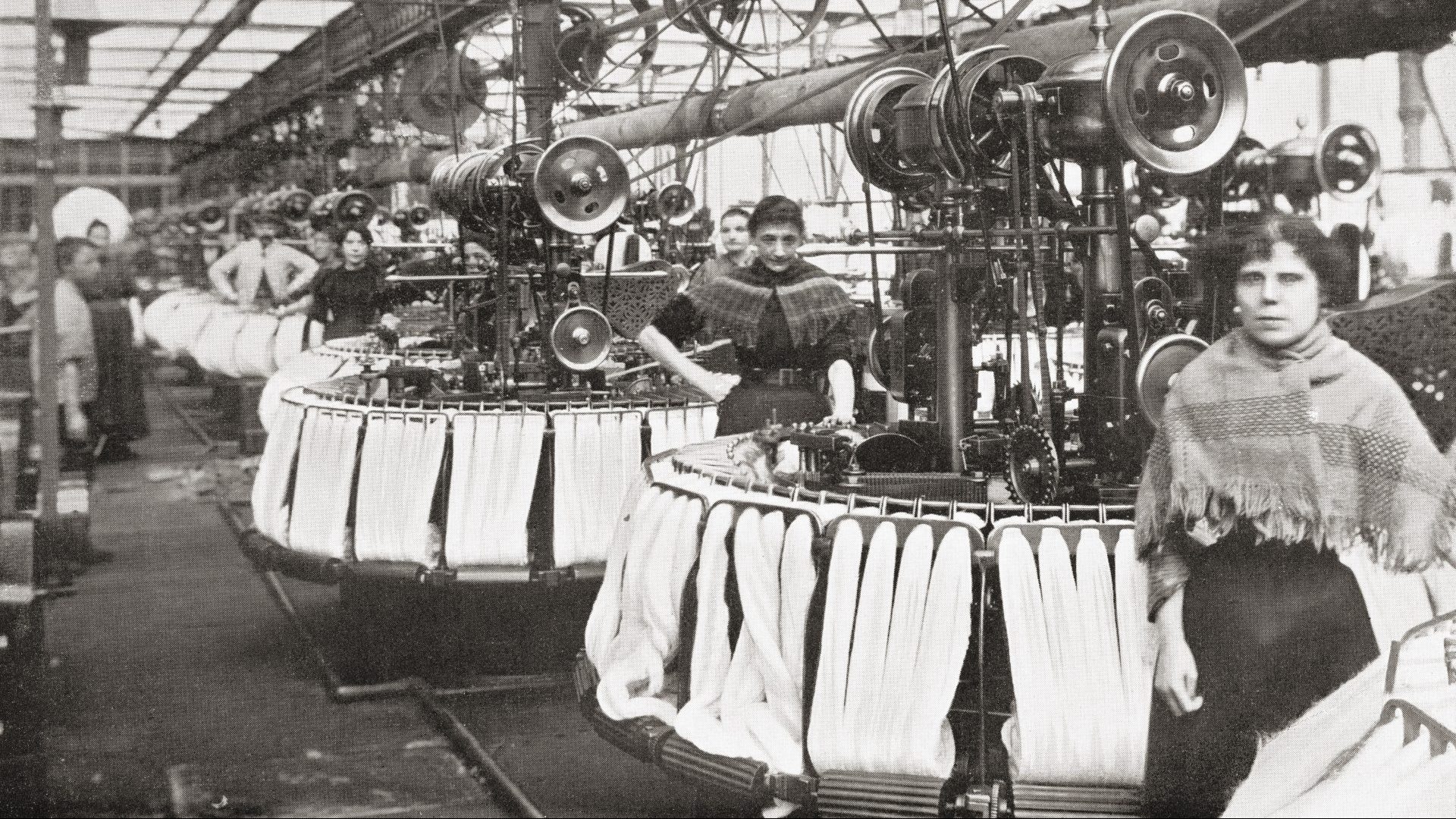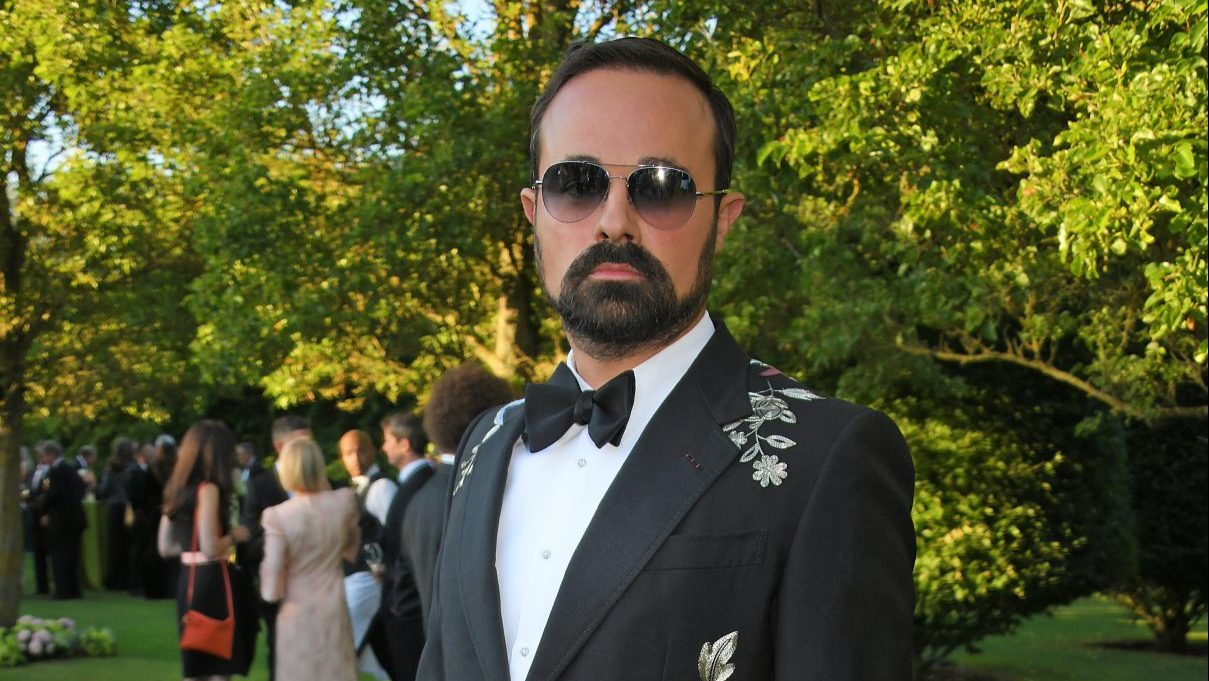In his poem Dulce et Decorum Est, the first world war poet, Wilfred Owen, graphically describes a chlorine gas attack against British soldiers. When the gas shells hit, one soldier in an ecstasy of fumbling fails to get his mask on in time: “He plunges at me, guttering, choking, drowning.” Owen describes how the blood comes “gargling from the froth-corrupted lungs”.
The first world war was the last time chemical weapons were used on a European battlefield. Now, the use of weapons of mass destruction or WMD (chemical, biological and nuclear weapons) on the continent has become plausible once more.
Chemical weapons are prohibited under the laws of armed conflict. The laws cover the declaration of war and the conduct with which belligerents fight, including prohibiting certain weapons that may cause unnecessary suffering. The suffering that Owen describes is deemed to be worse than that caused by the “conventional” shells falling on Mariupol. The indiscriminate nature of WMD explains the revulsion we feel towards them, yet even “smart bombs” miss their target, causing the euphemistically named collateral damage. Mustard gas was used only against soldiers in the First World War, yet Second World War bombing campaigns indiscriminately targeted civilians with conventional weapons.
WMD can, however, cause a lasting human and environmental damage that conventional weapons don’t. When in 1945, the US dropped the Little Boy nuclear bomb on Hiroshima, it’s estimated that 25% of the over 100,000 who died did so because of radiation effects; an immeasurable cross-generational legacy of radiation, sickness and trauma. There’s also the ongoing psychological trauma these weapons cause that only needs the possibility of their existence.
The Treaty on the Prohibition of Nuclear Weapons (TPNW), the first legally binding international agreement to prohibit nuclear weapons, only entered into force in 2021. No nuclear power has supported the treaty and the US and Russia have expressed opposition. Russia is, however, one of 193 signatories of an international treaty banning the use of chemical weapons.
Despite this Russia used a deadly nerve agent in Salisbury in 2018, poisoned opposition leader Alexei Navalny in 2020 and recently was the subject of claims that Roman Abramovich and two Ukrainian negotiators have suffered symptoms consistent with poisoning after attending back-channel negotiations in Kyiv. Russia’s close ally, Syria, who it has been supporting in a brutal civil war since 2015, has repeatedly used chemical weapons. Dropping chlorine gas in residential areas of Aleppo in 2016 led to the end of rebel resistance after four years of fighting.
The US, however, remains the only country to have conducted a nuclear attack. The Cold War saw the development of the Mutually Assured Destruction doctrine. This was influenced by game theory, particularly the idea of the Nash equilibrium, which defines the solution of a non-cooperative game involving two or more players. In this equilibrium, a stable state is reached when no player can gain by changing its strategy if the strategies of the other players remain unchanged. Neither side has an incentive to initiate a conflict or disarm. While the Soviets had the numerical advantage with conventional forces in Europe, Nato’s flexible approach allowed a nuclear escalation to counter Soviet successes. Both sides were aware of how the “game” would play out through incremental escalations to the point where there were no winners. It is assumed, however, that players are only concerned with their own self-interest and therefore, will limit risk to this end.
If the balance of power was swayed by one nation achieving a significant technological advantage the equilibrium would have been shattered. It was often kept in check through espionage and sabotage, as well as massive amounts of funding for research and development. In addition, both sides established regular channels for diplomacy and negotiations where they discussed weapons control. Eventually, this led to a degree of trust and disarmament between the two powers.
Since the end of the Cold War, nuclear concerns have centred on terrorist groups or rogue states. The idea of a Russian nuclear strike became far-fetched. Announcing the invasion, though, Putin made the unsubstantiated claim that “Ukraine was on the path to acquiring nuclear weapons” (likely deliberately echoing Nato’s claims about pre-invasion Iraq). Putin then ordered his nuclear forces on high alert. Former president Dmitry Medvedev has claimed that Russia is considering leaving the New START agreement, which caps the deployed nuclear arsenals of the US and Russia. On March 26, Medvedev stressed that Russian doctrine didn’t require an enemy to strike first, and they could deploy nuclear weapons against an enemy only using conventional weapons.
In assessing the likelihood of Russia using WMD, it’s important to note that Nato and Russia have reversed the roles they had in the Cold War. Nato is now the dominant conventional power. Nato assumed it would be invaded and fighting a defensive war that made escalation credible. Russia is now making these threats to deter western powers from deploying conventional forces, from boots on the ground to no-fly zones.
It could also be making these threats as a way of getting itself out of a deteriorating situation created by its own aggression. Putin’s threats may be designed to induce chaos and unpredictability, to the point where he can extract concessions in a negotiated settlement. For these threats to work they must be convincing.
A negotiated settlement seems Putin’s best option, but it’s unclear if he believes this is the case. He has made several assumptions that have already been proven to be false, including that the Ukrainian people would, if not welcome his army, at least not put up the fierce resistance they have done, and that his military was what it claimed to be on paper. Those below him are clearly fearful of passing bad news up the chain. Recent statements coming out of Russia suggesting that the Donbas region was always the primary strategic target suggest a degree of reality is filtering up. However, if we know nothing else about Putin, we know he is highly mendacious.
Putin’s use of chemical weapons demonstrates that he has no problem with breaking international humanitarian norms. From a military perspective, there are no targets that WMD could destroy that Russia cannot destroy with conventional weapons. In Aleppo, though, Putin saw how chemical attacks broke the will of the people. The morale of the Ukrainian people is arguably their greatest weapon. Putin may believe the only way to break this is via WMD. The use of tactical nuclear weapons would unequivocally signal Putin’s willingness to do whatever it takes to achieve his goals.
Ultimately to answer the question of Russia’s nuclear intent, we must get inside one man’s mind. Putin is an ideologue, influenced, among others, by the Russian Christian fascism of philosopher Ivan Ilyin. For Ilyin a corrupt world needed redemption from a nation capable of total politics; that nation was unsoiled Russia. Putin has entwined the Russian Orthodox church in his ideology. In 2019 Russia’s Federal Nuclear Centre placed a tender for a supplier of religious icons with the images of Saint Seraphim of Sarov and Saint Fedor Ushakov, the 18th-century Russian admiral notable for winning all his engagements. The Russian Orthodox Church has since the 1990s positioned itself as one of the main guardians of Russia’s nuclear capability.
Most analysts agree that the likelihood of a Russian nuclear strike remains low (a chemical strike has a slightly higher probability), but even a small increase in the risk of nuclear war should be taken extremely seriously. To understand how close to danger we are, we need to appreciate that Putin isn’t a cold rationalist, making calculated decisions.
With both sides at higher alert, regardless of intent, the possibility of a miscalculation increases. There were numerous near misses during the Cold War. One of the most infamous occurred in 1983 when the early-warning system reported that a series of missiles had been launched from the US. Duty officer Lt Colonel Stanislav Petrov judged the reports to be false. His subsequent decision to disobey orders is credited with preventing a potential nuclear war. The false alarm was created by a rare alignment of sunlight on high-altitude clouds above North Dakota.
So how should we respond? Our operational uncertainty around how to respond has an underlying ethical uncertainty. To counter an ideology, we need to work out what we believe. During the Cold War the omnicidal threat posed by Nato’s nuclear arsenal was justified as a deterrent to Soviet aggression. If we were to use it, it would be in defence and against a superior conventional enemy threatening our existence. Philosopher Michael Walzer claims that, when one is unjustly facing the “supreme emergency” of total extinction, one may waive the discrimination principle and target the enemy’s civilian population, even using WMD. Walzer references Churchill’s bombing of German cities in 1940. It’s a form of consequentialist argument, where the ends justify the means.
The USSR used conventional forces to invade countries including Czechoslovakia and Afghanistan. We didn’t step in to prevent Soviet aggression, although notably with the latter we provided those fighting the Russians equipment and intelligence as we are doing now in Ukraine. None of these aggressions, however, resulted in an escalated threat of nuclear weapons. We also didn’t step in when Russia annexed the Crimea in 2014. Nato has itself recently invaded countries. Do we believe that Russian aggression now presents the beginning of a “supreme emergency” that if left unchecked could lead to our extinction? If so, what means are we prepared to use to achieve our ends?
Alternatively, are we now taking a deontological approach that sets red lines for other countries in what means are acceptable whatever the ends? If doing so we must accept that by taking certain actions we will increase the risk of a war that our nuclear deterrent was meant to prevent. We must also, without committing to the TPNW and acknowledging the mistakes of Nato’s recent wars, expect accusations of hypocrisy. Most importantly, we must balance the duties we have to our own people, the people of Ukraine and people all over the planet – principles will cost lives. The US engaged in strikes in Syria after Assad used chemical weapons in 2017 and 2018. Targeting Russian forces in Ukraine would have greater consequences. While the West tries to reset its approach the diplomatic roles of India and China will be vital in preventing further escalation.
Harvard law professor Roger Fisher has suggested that the nuclear codes should be carried in a capsule embedded near the heart of a volunteer. The president would have to personally use a knife to gouge out the capsule, killing the volunteer to get the codes. Some claimed this would distort the president’s judgment. Fisher thought the opposite. Before killing thousands, leaders must understand the emotional impact of the death of an innocent.
Another Russian thinker whom Putin claims to admire is Fyodor Dostoevsky, who also called for the regeneration of sick Russian society through the rediscovery of its national identity and religion. He was critical of Western rationalism and consequentialism that he believed suppressed Christian compassion and reduced people to calculations.
In his novel Crime and Punishment, Dostoevsky exposes what he believes is the endpoint of Western consequentialist thinking; a Napoleonic personality who, in the interests of a higher good, believes that he has the right to kill. We should hope that Putin is persuaded by Dostoevsky’s message and, if his religious beliefs are genuine, they contain the compassion to understand the emotional impact of his actions. And just in case, let’s hope that he still has men like Stanislav Petrov in his ranks too.
Andy Owen is an author and former intelligence officer in the British Army



